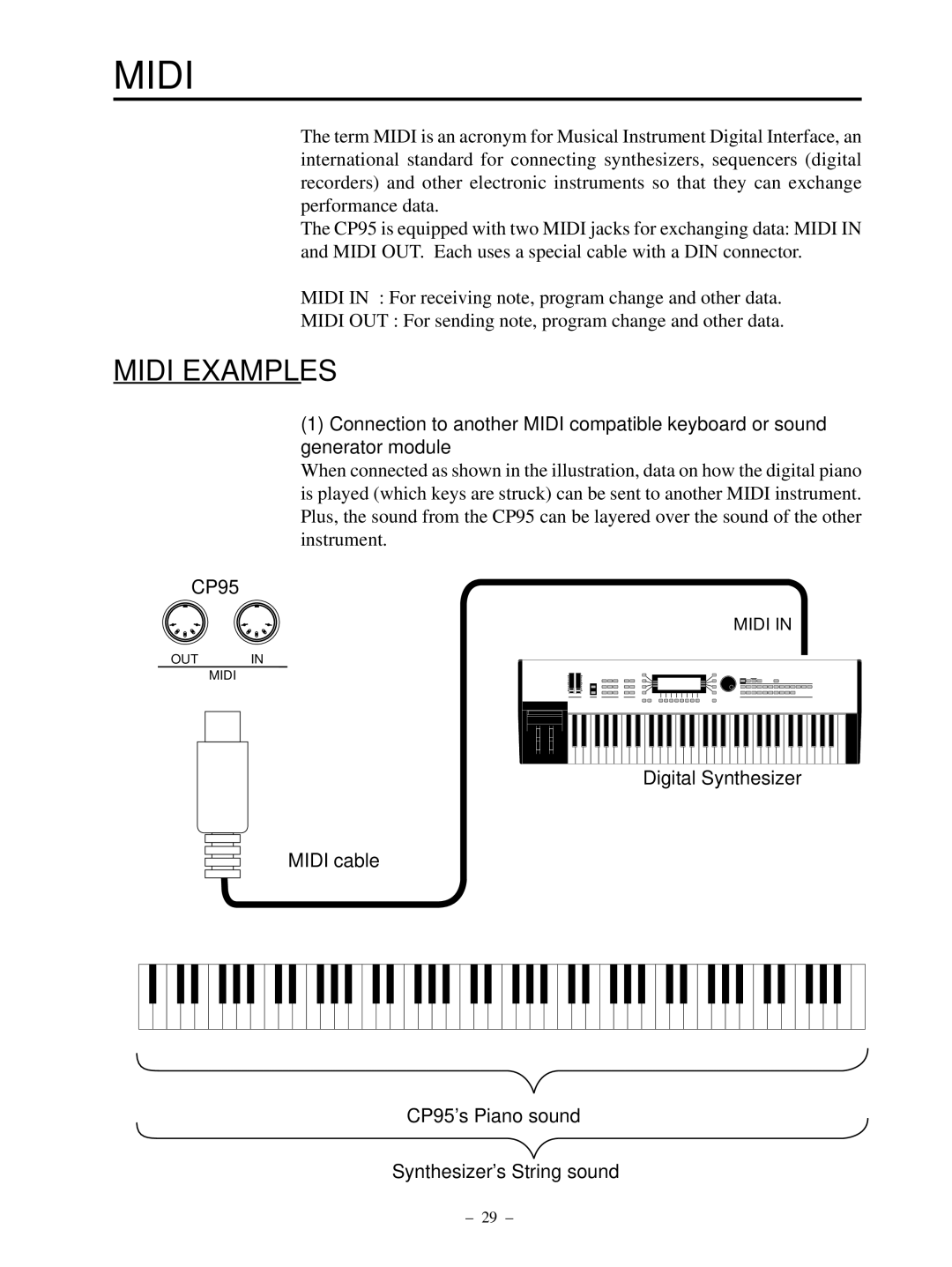CP95 specifications
The Kawai CP95 is a portable digital piano that combines authentic piano sound with advanced digital technology, making it a favorite choice for both budding pianists and seasoned performers. This instrument is designed to provide an enriching musical experience, featuring a range of specifications and capabilities that set it apart in the crowded digital piano market.One of the standout features of the Kawai CP95 is its Responsive Hammer III action. This technology is engineered to mimic the touch and feel of an acoustic piano, complete with graded key weighting that differs from the lower to higher registers. The keys are crafted from premium materials and feature a natural ivory touch finish for a smooth playing experience, enhancing the tactile response of each note.
In terms of sound quality, the CP95 is equipped with Kawai's Harmonic Imaging XL technology, which utilizes advanced sampling techniques to capture the nuances of the Kawai EX concert grand piano. This results in clear, rich sounds featuring a wide dynamic range and tonal variety. The piano also boasts 88-key polyphony, allowing for even the most complex passages to be played without dropping notes.
The CP95 offers a range of instrument voices, including electric pianos, organs, strings, and more, giving musicians the versatility to explore different genres and styles. Additionally, it incorporates a variety of digital effects, such as reverb and chorus, to further enhance the sound palette.
Another notable characteristic of the Kawai CP95 is its user-friendly interface. The brightly lit backlit LCD display makes it easy to navigate through the various settings and features. With built-in lessons, the instrument serves as a great tool for learning and practicing. The built-in metronome and recorder allow users to track their progress and hone their skills effectively.
Portability is also a key consideration with the CP95. Its compact design, lightweight chassis, and battery operation capabilities make it ideal for musicians on the go or those with limited space. The piano is equipped with MIDI connectivity, allowing for seamless integration with computers and other music equipment, enabling creative possibilities in recording and production.
In conclusion, the Kawai CP95 stands out for its blend of traditional feel and modern technology, making it a compelling choice for performers, educators, and casual players alike. With its realistic playability, exceptional sound quality, and user-friendly interface, this digital piano is poised to inspire musical creativity and exploration. It encapsulates Kawai's commitment to quality and innovation in the realm of digital pianos.

